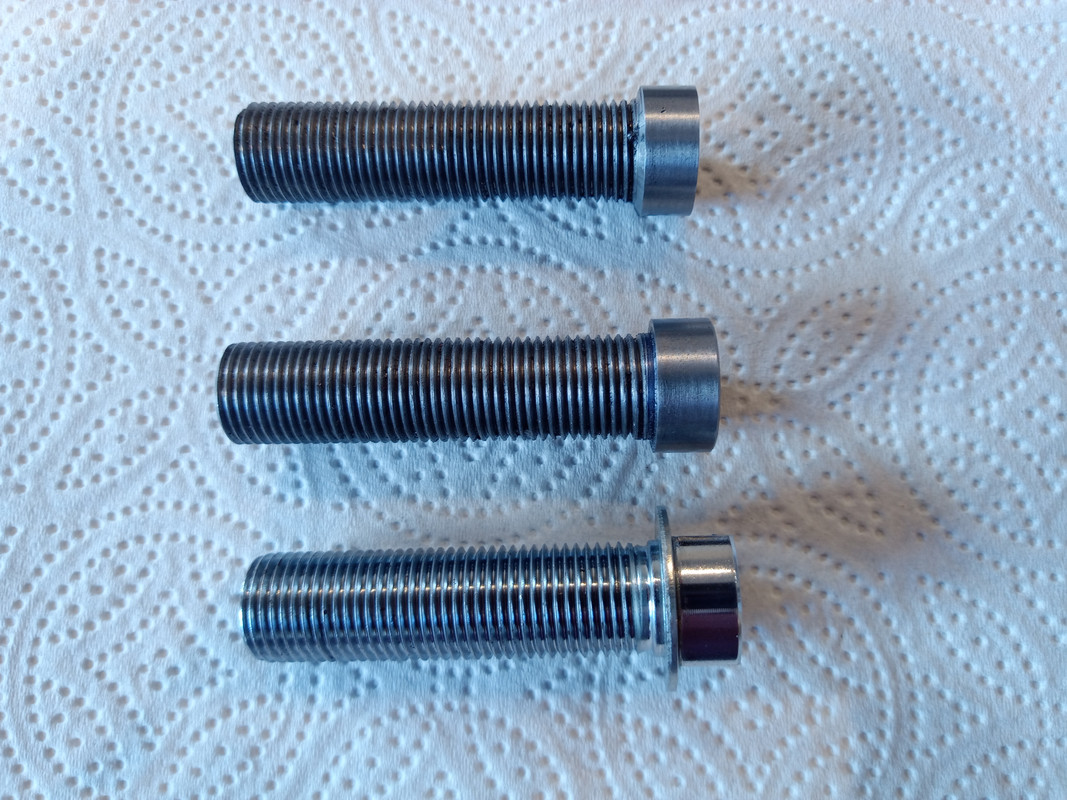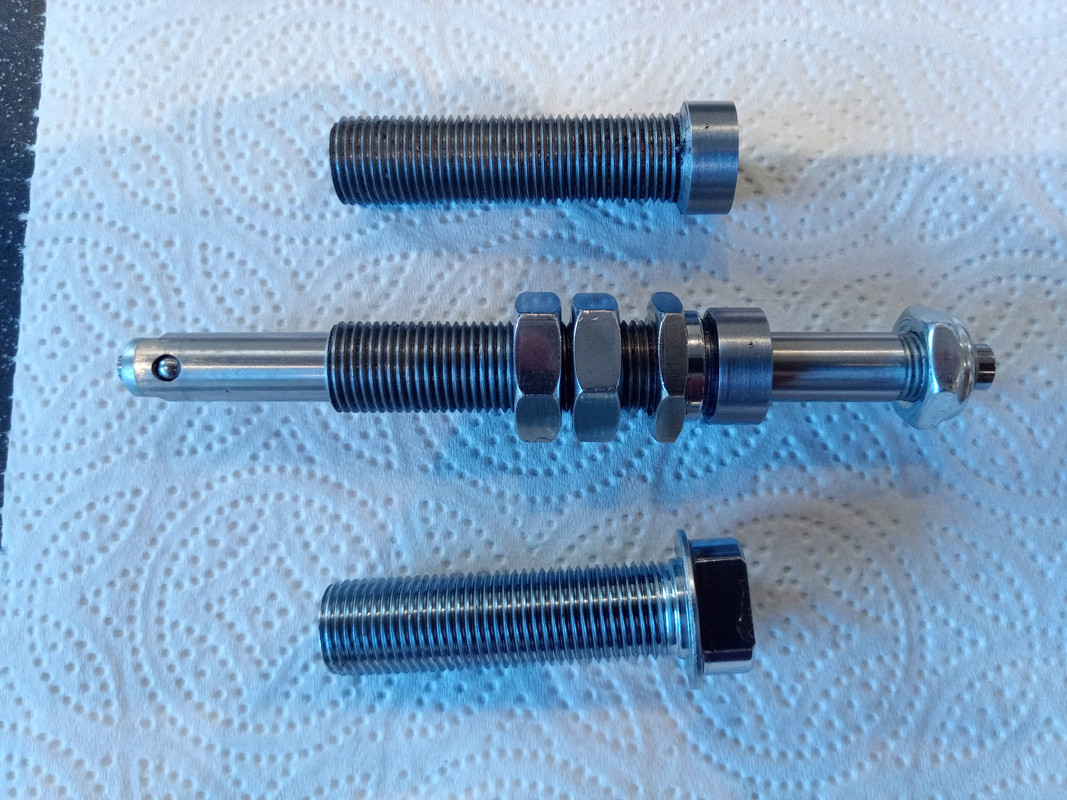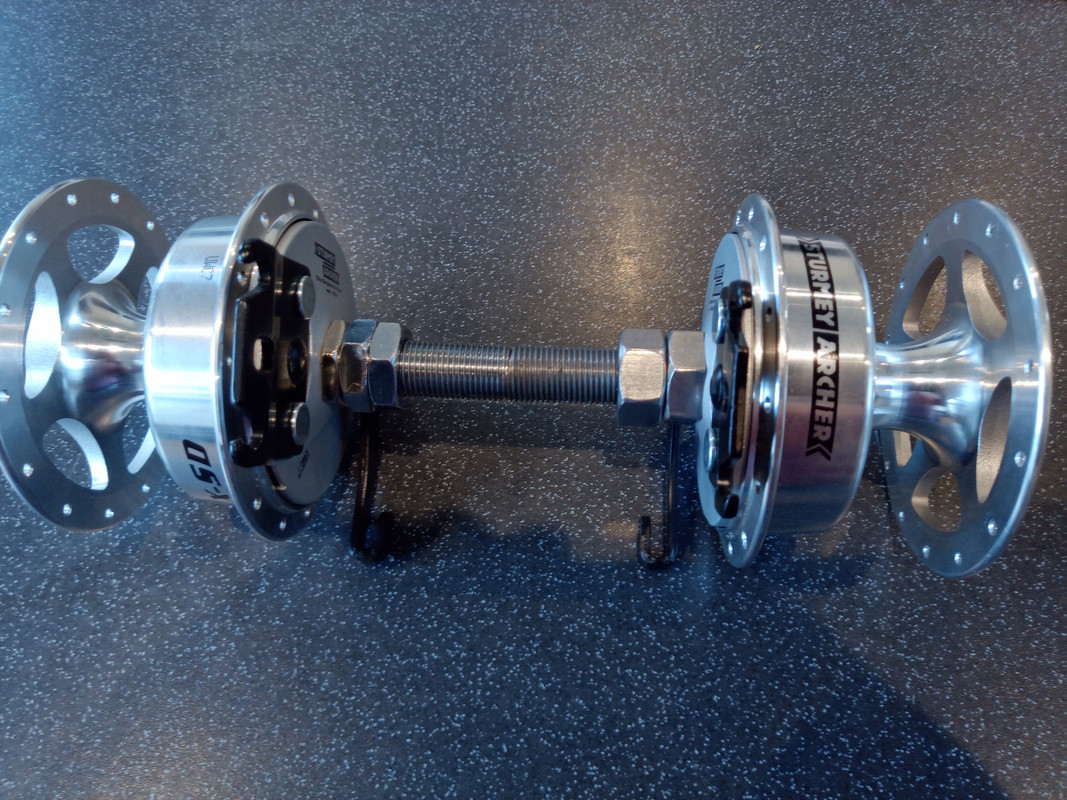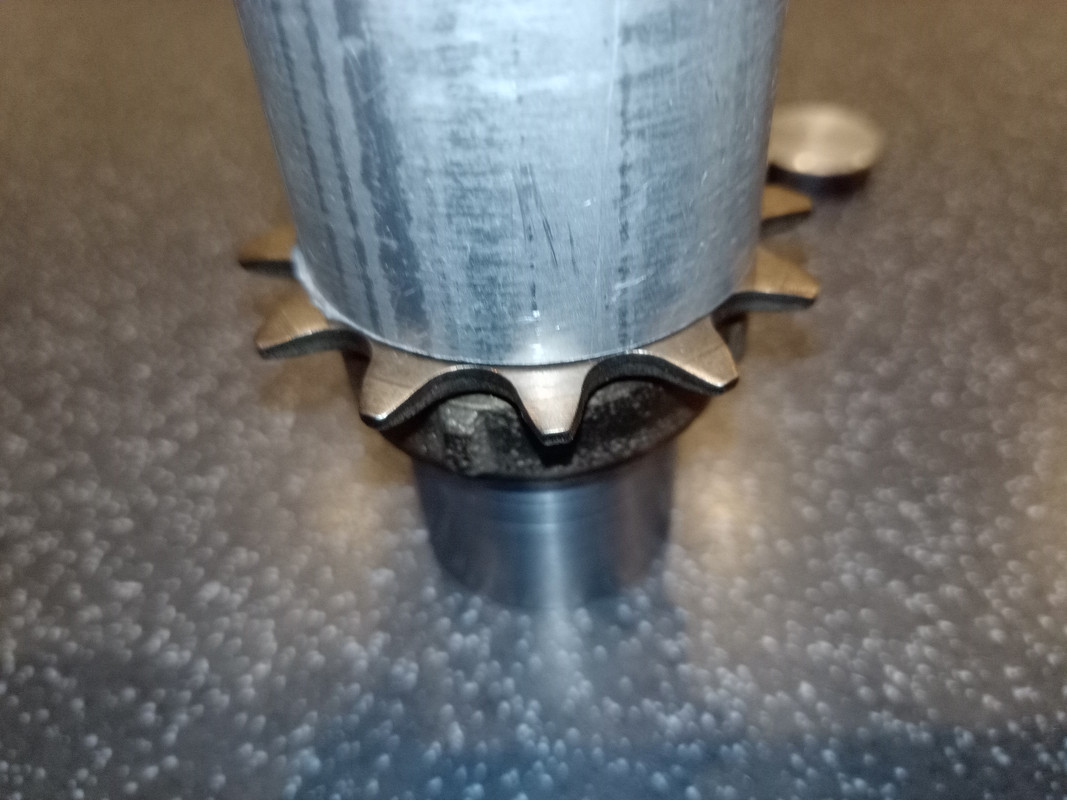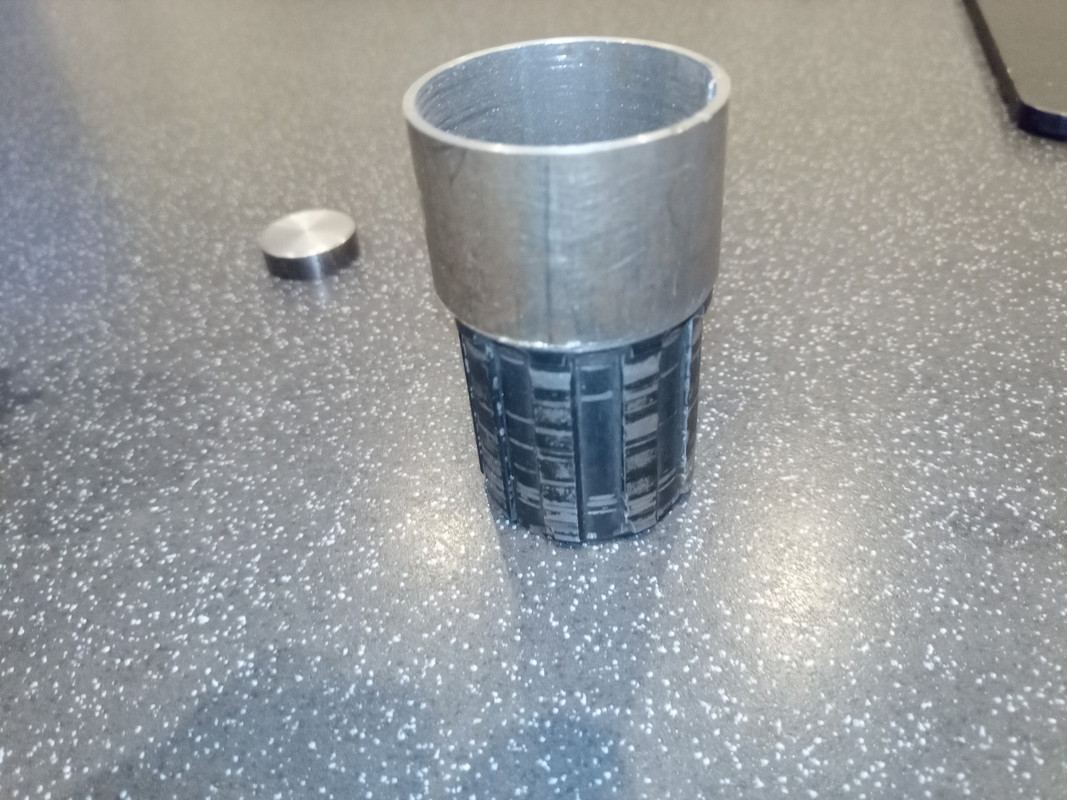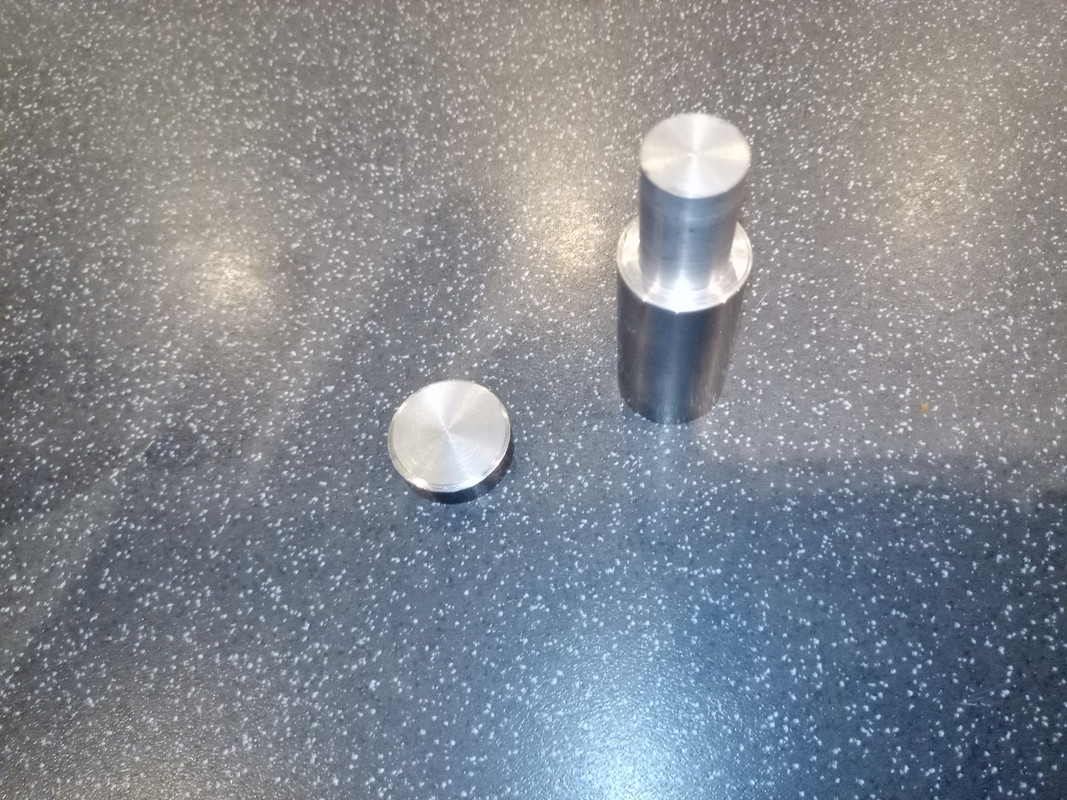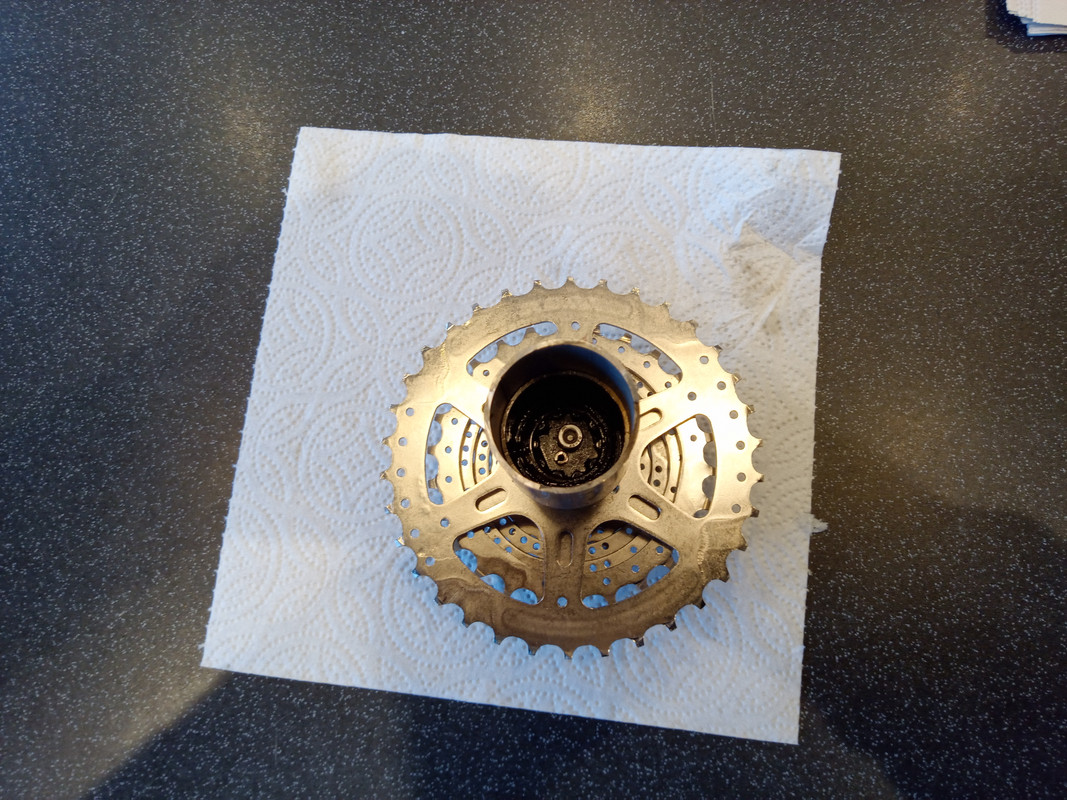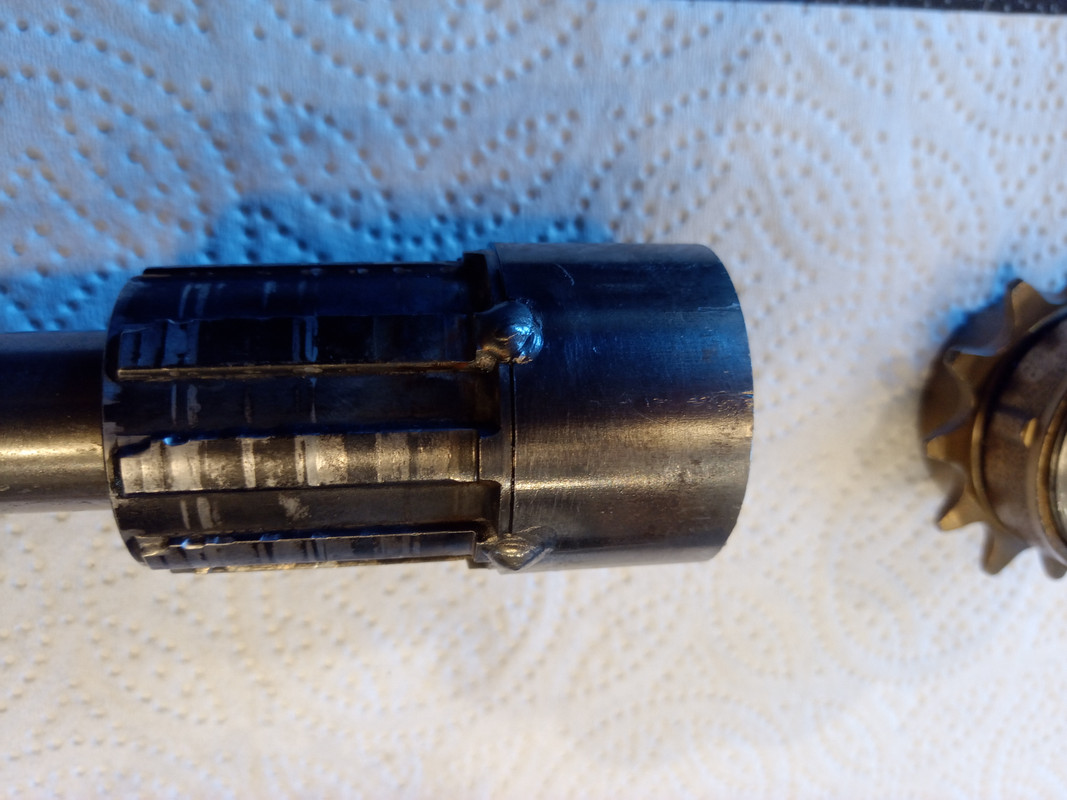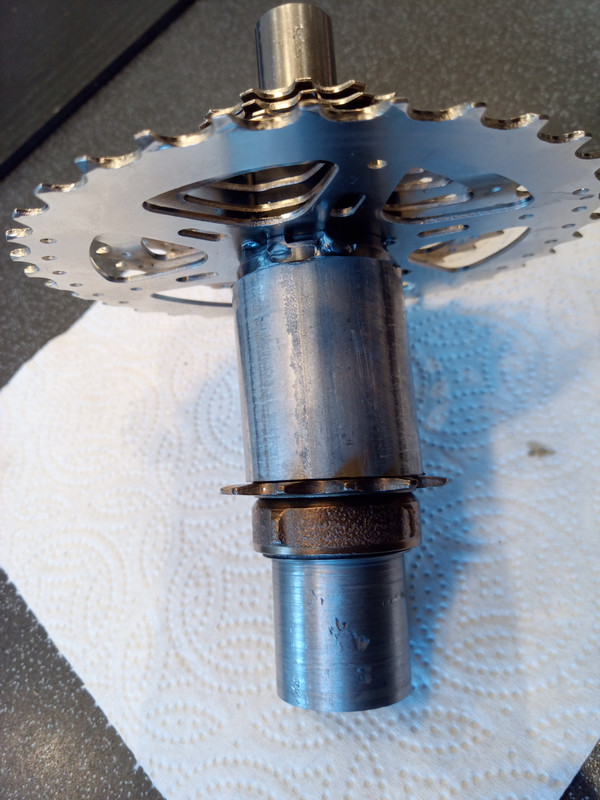DannyC
0
In yet another "break" from the Delta build I spent some time making a part you cannot buy for your Sturmey Archer Drum-Hub backplates.
The backplates are common but the parts that fit either side of the backplate differ depending if you are using bolted-on hubs or "Quick-Release" pin attached hubs.
But you cannot buy the QR variant parts anywhere, from anyone.
I bent/broke one of mine and Paul (Stormbird) kindly swapped some he had in storage, for me buying him the non-QR components which bizarrely you can actually buy.
But, I have been buying additional SA Drum Hubs which have come without internals or backplate mounts, so I need to make some.
Today I completed the "awkward part" of the operation ... The threading of the rod which will be drilled out for the QR-Pin or M12 bolt.
Threading M16 Fine on a "Baby Lathe" which is underpowered and lacks rigidity is often fraught and punctuated with slipping belts and Anglo-Saxon epithets.
However, this first one was done OK and all that remains is to drill out the 12mm hole for the axle-pin/bolt and some flats on the internal hub end.
The backplates are common but the parts that fit either side of the backplate differ depending if you are using bolted-on hubs or "Quick-Release" pin attached hubs.
But you cannot buy the QR variant parts anywhere, from anyone.
I bent/broke one of mine and Paul (Stormbird) kindly swapped some he had in storage, for me buying him the non-QR components which bizarrely you can actually buy.
But, I have been buying additional SA Drum Hubs which have come without internals or backplate mounts, so I need to make some.
Today I completed the "awkward part" of the operation ... The threading of the rod which will be drilled out for the QR-Pin or M12 bolt.
Threading M16 Fine on a "Baby Lathe" which is underpowered and lacks rigidity is often fraught and punctuated with slipping belts and Anglo-Saxon epithets.
However, this first one was done OK and all that remains is to drill out the 12mm hole for the axle-pin/bolt and some flats on the internal hub end.

